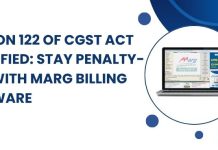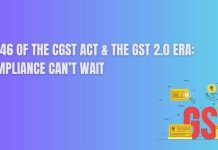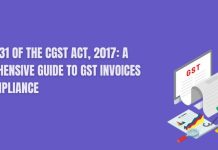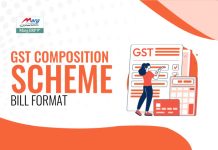Introduction:
The Goods and Services Tax (GST) has transformed the indirect tax landscape in India since its implementation. GSTR-9 is an annual return that taxpayers registered under GST need to file. Within GSTR-9, Table 8A holds significant importance, as it provides a detailed summary of the input tax credit (ITC) availed, reversed, and ineligible for the financial year. In this blog post, we will delve into the intricacies of Table 8A and shed light on its key components.
Table 8A: Breakdown of Input Tax Credit
Table 8A of GSTR-9 captures a comprehensive summary of the input tax credit availed by a taxpayer during the financial year. It is divided into three sections:
- ITC Available and Reversed: This section requires you to report the ITC availed during the financial year and any reversal or reduction of such credits. It comprises the following details:a. ITC as per GSTR-2A: This refers to the ITC available as per the auto-populated GSTR-2A, which contains details of purchases reported by your suppliers. Ensure that you reconcile this with your books of accounts and make necessary adjustments.b. ITC on inward supplies (other than imports) as per books: Here, you need to mention the total ITC claimed on inward supplies from registered suppliers, excluding imports. It should match the figures in your books of accounts.
c. ITC on inward supplies (other than imports) claimed during the financial year: Report the total ITC claimed during the financial year for inward supplies, excluding imports.
d. ITC on inward supplies (other than imports) for which reversal/reduction was made: If any ITC claimed during the year has been reversed or reduced, provide the details of such instances.
e. Net ITC available and reversal: This figure represents the net ITC available after adjusting reversals/reductions. It is calculated by subtracting the amount in point (d) from the amount in point (c).
- ITC Ineligible: This section requires you to disclose the amount of ITC claimed but deemed ineligible as per the provisions of the GST law. It includes ITC related to goods/services that fall under restricted or blocked categories, non-compliant invoices, non-business use, etc.a. ITC on inward supplies (other than imports) declared as ineligible: Specify the amount of ITC claimed during the financial year that is deemed ineligible.b. ITC on inward supplies (other than imports) reversed: If you have reversed any ITC claimed previously due to ineligibility, mention the corresponding amount.
c. Net ITC ineligible: This represents the net ITC amount that is ineligible for the financial year. It is calculated by subtracting the amount in point (b) from the amount in point (a).
- Reconciliation of ITC: The final section of Table 8A requires taxpayers to reconcile the ITC availed as per books with the ITC claimed in GSTR-9. It includes:a. ITC availed as per audited annual financial statement (AFS): Report the total ITC availed as per your audited AFS for the financial year.b. ITC as per GSTR-9: Provide the ITC claimed in GSTR-9 for the same financial year.
c. Difference: Calculate the difference between the figures in point (a) and point (b). Any variation should be analyzed and rectified if necessary.
Conclusion:
Table 8A of GSTR-9 is a crucial component for taxpayers in summarizing their input tax credit availed, reversed, and ineligible for a given financial year. It ensures compliance with the GST regulations and provides a platform for reconciling the ITC as per books of accounts and the ITC claimed in GSTR-9. By accurately filling out Table 8A, taxpayers can avoid discrepancies and potential penalties.
It is important for businesses to maintain meticulous records and regularly reconcile their books of accounts with the auto-populated GSTR-2A. This practice ensures that the figures reported in Table 8A are accurate, thus promoting transparency and compliance in GST filings.
Read more useful content:
- How to Save Tax on Salary
- Guide to Understanding Direct Taxes in India
- Filing Income Tax Returns
- GST E-invoice
Frequently Asked Questions (FAQs)
What is Table 8A in GSTR-9?
Table 8A is a section within the GSTR-9 annual return that provides a detailed summary of the input tax credit (ITC) availed, reversed, and ineligible during the financial year.
What information is required to be reported in Table 8A?
Table 8A requires taxpayers to report various details, including ITC as per GSTR-2A, ITC on inward supplies as per books, ITC claimed during the financial year, ITC reversed/reduced, and ITC deemed ineligible.
How should I reconcile the ITC as per GSTR-2A with my books of accounts?
To reconcile the ITC as per GSTR-2A with your books of accounts, you need to compare the details provided in GSTR-2A with your purchase records. Make necessary adjustments for any discrepancies or missing invoices.
What are the types of ITC that can be reversed or reduced?
ITC can be reversed or reduced in cases where the input goods or services are returned, the supplier has not paid the tax to the government, or the recipient has not paid the supplier within 180 days from the invoice date.
What constitutes ITC deemed ineligible?
ITC deemed ineligible includes ITC claimed on purchases that are not eligible for credit, such as goods or services falling under restricted or blocked categories, non-compliant invoices, non-business use, etc.
How should I report the ITC claimed during the financial year?
You should report the total amount of ITC claimed on inward supplies (excluding imports) during the financial year in the corresponding field in Table 8A.
What should I do if I have reversed or reduced any ITC claimed previously?
If you have reversed or reduced any ITC claimed previously, you should provide the details of such instances, including the amount and the reason for reversal or reduction.
How can I determine the net ITC available after adjustments?
The net ITC available after adjustments can be calculated by subtracting the amount of ITC reversed/reduced (as reported in Table 8A) from the total ITC claimed during the financial year (also reported in Table 8A).
What is the purpose of the reconciliation of ITC in Table 8A?
The reconciliation of ITC in Table 8A ensures that the ITC availed as per your audited annual financial statement (AFS) matches with the ITC claimed in GSTR-9. Any discrepancies should be analyzed and rectified if necessary.
What are the implications of incorrect reporting in Table 8A?
Incorrect reporting in Table 8A may lead to discrepancies between your books of accounts and GSTR-9, which could result in penalties or additional compliance obligations. It is essential to ensure accurate and consistent reporting to maintain compliance with GST regulations.




















